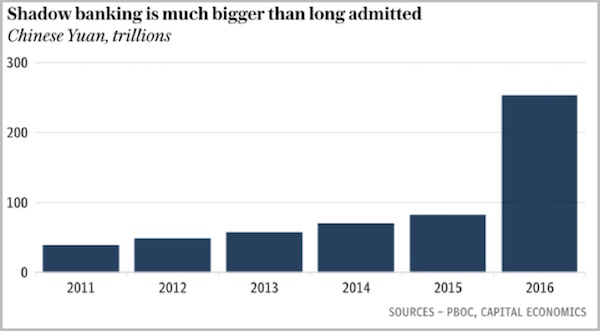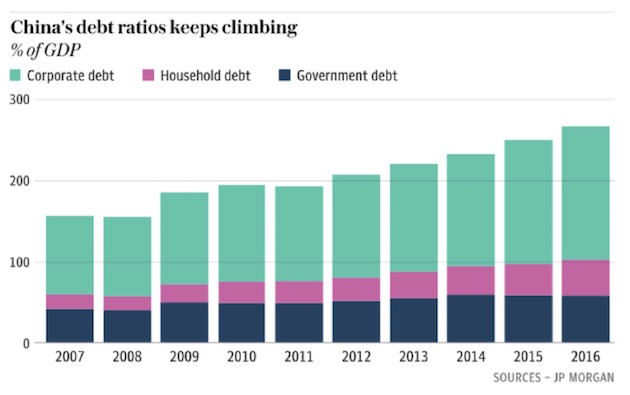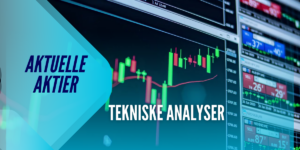Fra Mauldin Economics.
Seriously speaking, could the three scenarios we discuss below turn out be fateful black swans? Yes. But remember this: A harmless white swan can look black in the right lighting conditions. Sometimes that’s all it takes to start a panic.
Black Swan #1: Yellen Overshoots
It is increasingly evident, at least to me, that the US economy is not taking off like the rocket some predicted after the election. President Trump and the Republicans haven’t been able to pass any of the fiscal stimulus measures we hoped to see. Banks and energy companies are getting some regulatory relief, and that helps; but it’s a far cry from the sweeping healthcare reform, tax cuts, and infrastructure spending we were promised. Though serious, major tax reform could postpone a US recession to well beyond 2020, what we are going to get instead is tinkering around the edges.
On the bright side, unemployment has fallen further, and discouraged workers are re-entering the labor force. But consumer spending is still weak, so people may be less confident than the sentiment surveys suggest. Inflation has perked up in certain segments like healthcare and housing, but otherwise it’s still low to nonexistent.
Is this, by any stretch of the imagination, the kind of economy in which the Federal Reserve should be tightening monetary policy? No – yet the Fed is doing so, partly because they waited too long to end QE and to begin reducing their balance sheet. FOMC members know they are behind the curve, and they want to pay lip service to doing something before their terms end. Moreover, Janet Yellen, Stanley Fischer, and the other FOMC members are religiously devoted to the Phillips curve. That theory says unemployment this low will create wage-inflation pressure. That no one can see this pressure mounting seems not to matter: It exists in theory and therefore must be countered.
The attitude among central bankers, who are basically all Keynesians, is that messy reality should not impinge on elegant theory. You just have to glance at the math to recognize the brilliance of the Phillips curve!
It was Winston Churchill who said, “However beautiful the strategy, you should occasionally look at the results.” Fact is, the lack of wage growth among the bottom 70–80% of workers (the Unprotected class) constitutes a real weaknesses in the US economy. If you are a service worker, competition for your job has kept wages down.
The black-swan risk here is that the Fed will tighten too much, too soon. We know from recent FOMC minutes that some members have turned hawkish in part because they wanted to offset expected fiscal stimulus from the incoming administration. That stimulus has not been forthcoming, but the FOMC is still acting as if it will be.
What happens when the Fed raises interest rates in the early, uncertain stages of a recession instead of lowering them? I’m not sure we have any historical examples to review. Logic suggests the Fed will extinguish any inflation pressure that exists and push the economy in the opposite direction instead, into outright deflation.
Deflation in an economy as debt-burdened as ours is could be catastrophic. We would have to repay debt with cash that is gaining purchasing power instead of losing it to inflation. Americans have not seen this happen since the 1930s. It wasn’t fun then, and it would be even less fun now.
Worse, I doubt Trump’s FOMC appointees will make a difference. Trump appears to be far more interested in reducing the Fed’s regulatory role than he is in tweaking its monetary policies. I have no confidence that Yellen’s successor, whoever that turns out to be, will know what needs to be done or be able to do it fast enough.
Let me make an uncomfortable prediction: I think the Trump Fed – and since Trump will appoint at least six members of the FOMC in the coming year, it will be his Fed – will take us back down the path of massive quantitative easing and perhaps even to negative rates if we enter a recession. The urge to “do something,” or at least be seen as trying to do something, is just going to be too strong.
Black Swan #2: ECB Runs Out of Bullets
Last week, news reports said that the Greek government is preparing to issue new bonds for the first time in three years. “Issue bonds” is a polite way of saying “borrow more money,” something many bond investors think Greece is not yet ready to do.
Their opinions matter less than ECB chief Mario Draghi’s. Draghi is working hard to buy every kind of European paper except that of Greece. Adding Greece to the ECB bond purchases program would certainly help.
Relative to the size of the Eurozone economy, Draghi’s stimulus has been far more aggressive then the Fed’s QE. It has pushed both deeper, with negative interest rates, and wider, by including corporate bonds. If you are a major corporation in the Eurozone and the ECB hasn’t loaned you any money or bought your bonds yet, just wait. Small businesses, on the other hand, are being starved.
Such interventions rarely end well, but admittedly this one is faring better than most. Europe’s economy is recovering, at least on the surface, as the various populist movements and bank crises fade from view. But are these threats gone or just glossed over? The Brexit negotiations could also throw a wrench in the works.
Despite recent predictions by ECB watchers and the euro’s huge move up against the dollar on Friday, Anatole Kaletsky at Gavekal thinks Draghi is still far from reversing course. He expects that the first tightening steps won’t happen until 2018 and anticipates continued bond buying (at a slower pace) and near-zero rates for a long time after. But he also sees risk. Anatole explained in a recent report:
Firstly, Fed tapering occurred at a time when Europe and Japan were gearing up to expand monetary stimulus. But when the ECB tapers there won’t be another major central bank preparing a massive balance sheet expansion. It could still turn out, therefore, that the post-crisis recovery in economic activity and the appreciation of asset values was dependent on ever-larger doses of global monetary stimulus. If so, the prophets of doom were only wrong in that they overstated the importance of the Fed’s balance sheet, compared with the balance sheets of the ECB and Bank of Japan.
This is a genuine risk, and an analytical prediction about the future on which reasonable people can differ, unlike the factual observations above regarding the revealed behavior of the ECB, the Franco-German rapprochement and the historical experience of Fed tapering.
Secondly, it is likely that the euro will rise further against the US dollar if the ECB begins to taper and exits negative interest rates. A stronger euro will at some point become an obstacle to further gains in European equity indexes, which are dominated by export stocks.
Anatole makes an important point. The US’s tapering and now tightening coincided with the ECB’s and BOJ’s both opening their spigots. That meant worldwide liquidity was still ample. I don’t see the Fed returning that favor. Draghi and later Kuroda will have to normalize without a Fed backstop – and that may not work so well.
Black Swan #3: Chinese Debt Meltdown
China is by all appearances unstoppable. GDP growth has slowed down to 6.9%, according to official numbers. The numbers are likely inflated, but the boom is still underway. Reasonable estimates from knowledgeable observers still have China growing at 4–5%, which, given China’s size, is rather remarkable. The problem lies in the debt fueling the growth.
Ambrose Evans-Pritchard reported some shocking numbers in his July 17 Telegraphcolumn. A report from the People’s Bank of China showed off-balance-sheet lending far higher than previously thought and accelerating quickly. (Interestingly, the Chinese have made all of this quite public. And President Xi has taken control of publicizing it.)

The huge increase last year probably reflects efforts to jump-start growth following the 2015 downturn. Banks poured fuel on the fire, because letting it go out would have been even worse. But they can’t stoke that blaze indefinitely.
President Xi Jinping has been trying to dial back credit growth in the state-owned banks for some time; but in the shadow banks that Xi doesn’t control, credit is growing at an astoundingly high rate, far offsetting any minor cutbacks that Xi has made.
Here are a few more juicy quotes from Ambrose:
President Xi Jinping called for a hard-headed campaign to curb systemic risk and to flush out “zombie companies”, warning over the weekend that financial stability was a matter of urgent national security.
It is the first time that a Chinese leader has chaired the National Finance Work Conference – held every five years to thrash out long-term plans – and is a sign of rising concern as debt reaches 280pc of GDP.
In a move that will send shivers up the spines of local party officials, he said they will be held accountable for the rest of their lives for debts that go wrong. Any failure to identify and tackle risks will be deemed “malfeasance”.
Ambrose then quotes Patrick Chovanec of Silvercrest Asset Management:
“The banks have been selling products saying it isn’t our risk. Investors have been buying them saying it’s not our risk either. They all think the government will save everything. So what the markets are pricing is what they think is political risk, not economic risk,” he said.
A market in which “they all think the government will save everything” is generally not one you want to own – but China has been an exception. It won’t remain one forever. The collapse, when it comes, could be earthshaking.
Chinese growth has been fueled by a near doubling of both GDP and debt over the last nine years:

One reason why so many people are complacent about China is that they truly believe that “this time is different” applies to Chinese debt. Maybe in 10 years I will look back and say that it really was different, but I don’t think so. As is often the case with China, China’s current circumstances are without a true equal in the history of the world.
And if Xi is really serious about slowing the pace of growth (another form of tightening by a major world economy), that move would just add to overall global risk.
It is very possible that any of these black swans could trigger a recession in the US. And let’s be clear: The next US recession will be part of a major global recession and will result in massive new government debt build-up. It will not end well.







